2001 Totcky Award Winner
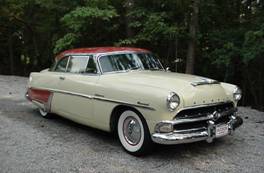
Submitted by Nell O.
|
Nell called and talked with the owner who said he?d had the car 30 years and that his son had run into it with the family van and it had been sitting for a number of years in his garage. She asked for additional pictures. The photos showed the left back of the car had been hit and there was more than ?slight? damage to the left taillight area, rear fender, stainless, and bumper guard. After talking with the owner several times, Nell and Randy were still unsure about the car since they would not be able to make the trip to see the car. But the owner lowered the price by a third, making it irresistible. Then their friend Ray Hickey said, ?If you don?t buy it, I am?. So with the assumption that they could fairly easy fix the damaged areas, they bought the car and made arrangements for the car to be shipped to Alabama. The car hauler was a very large, enclosed truck and could not come up the cul-de-sac to their garage, so the car had to be offloaded down on the main street of the subdivision. Getting the car down the truck ramp, around the corner, and up the fairly steep hill to the north garage area took some careful maneuvering by Ray Hickey (who volunteered to drive the brakeless car off the truck). Ray did this without a hitch. The first thing the three did was work on getting it to run a little better, so Randy and Nell changed out all the usual plugs, points, condenser, rotor, cap, voltage regulator, and coil - never touching the carburetor. Next, Ray came over and they reworked the entire brake system including master cylinder, wheel cylinders, brake shoes, entire length of brake lines, and all fittings. There was some difficulty getting the rear hubs off, but with the brake work done Randy was able to drive the car as they pursued a shop to tackle the body work. This would be the tall pole. It turned out the damage was extensive. When they checked out the rear fenders, they found homemade braces and all kinds of things stuffed into the cracks...no bondo - just socks, towels, rags, etc. The rear fenders and the trunk floor were a disaster, but the engine and transmission seemed to be okay as was the interior. 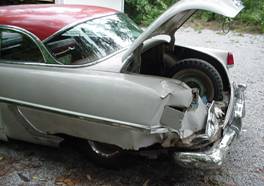

After studying the situation and getting advice from many HET chatters on the internet (as well as in their Midsouth region club), they decided a parts car would be needed. The Hudson?s unibody construction was a much-touted safety feature but meant fenders could not be removed by simply unbolting them. The rear of the Hudson would need to be cut off and the rear of a donor car would be welded on. Searching for a 2-door Hudson parts car was tedious and unfruitful, so they settled for a 4-door Hornet Special owned by a fellow HET?er in Texas. He also had a rear bumper and other stainless that would be necessary to put the car back in shape and would deliver to Alabama.. Using a 4-door car was particularly tricky because the trunk lid for the 2-door was larger and the rear fenders a little different. They would need to get the entire trunk off the donor car and match it to the 2-door. Randy roughed out a pattern on both cars with paint. While waiting for the body shop, they replaced both rocker panels manually cutting them from the donor car using an air tool of Ray?s (the tool would not cut the steel when air-powered so a hammer was used with the tool). It took nearly 40 hours of labor to cut the 4-door donor car rocker panels off and fit them to the 2-door Hornet. Next they pulled out the carpet and replaced it. The headlight switch needed work, so the entire lighting system was reworked for good continuity. Randy cleaned the engine and detailed it. Then applied a gallon of POR-15 rust inhibitor to the undercarriage, some of which he wore for days. Finally a local body shop guy came by, looked at the two cars, and said he could do the body work. By now it was winter and they prepared the car for its 14-mile trip to South Parkway?original tubed snow tires and all. Randy went by the body shop every Friday checking progress and after about 7 weeks and 60 dedicated hours of labor, the transplant was complete. (Although there were a few trips when he didn?t think they?d get there.) After they got the car home, they had distributor and fuel pump problems to deal with and then a leaking gas tank. But again a fellow HET?er came through with a refurbished tank for the rare ?54. 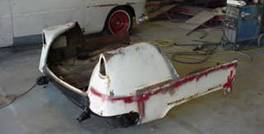
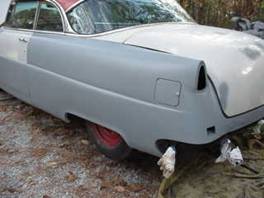
To prepare for painting, they worked feverishly to remove the bumpers, the hood and trunk ornaments, and all stainless and chrome trim from the car for the drive to the paint shop (the trip was made in between thunderstorms one Sunday afternoon with the 17-mile trip becoming 23 miles due to flooded creeks across the road). It was cold and the snow tires bumpy, but they made it. After three trips to repair blotched paint, etc., they finally got the car back, and immediately put a new exhaust system on it and brand new wide whitewall Coker tires. After waiting about 6 weeks, they endured the pleasure of wet sanding, compounding, polishing and waxing. Then all the chrome and stainless went back on the car. The first trip to an orphan car meet out they managed to get only 30 miles from home when the car died. They traveled on with friends and later in the day came back to find a plugged fuel filter at the back. But a month later (April 2001) they got the confidence to drive it nearly 240 miles round trip to an HET meeting where several members who had known about the car were amazed to see it and the shape it was in now. Since then they?ve taken it to a number of shows where they?ve won several trophies, and wherever they go the car always draws a crowd. In 2001 they also won the annual Totcky Award for most improved car from their local AACA Region. But best of all, with the help of HET and AACA friends they?ve saved a rare car that might very well have ended up being crushed. 
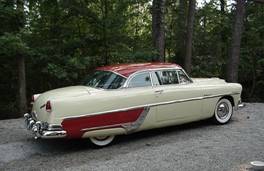
|
 |
Contact Webeditor |
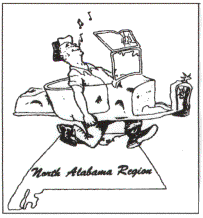
|